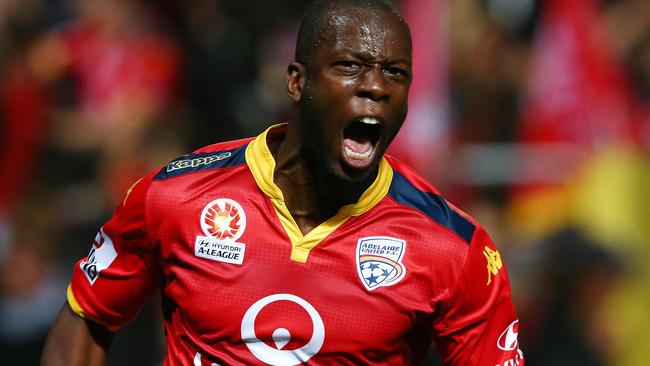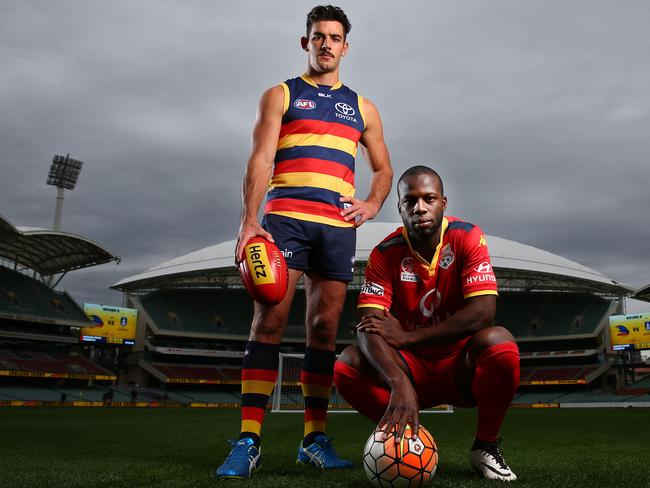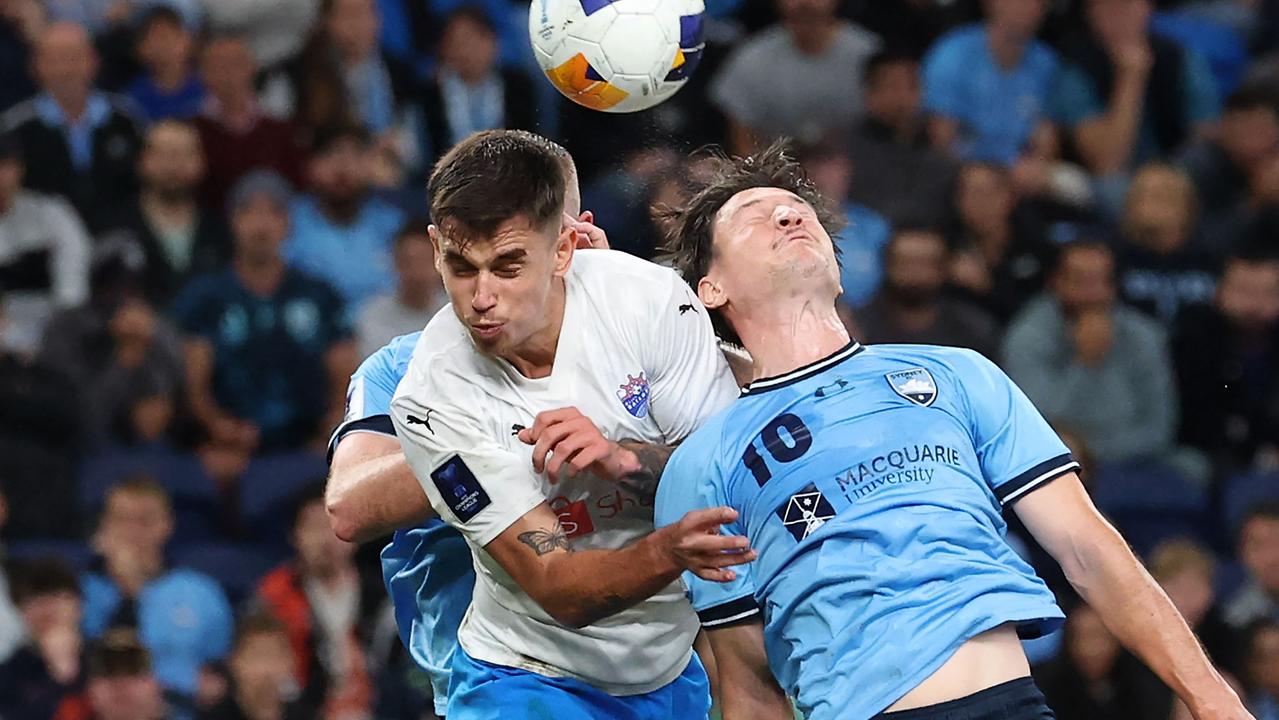Former Socceroos star Bruce Djite says A-league is Australia’s most underpaid league
AN Aussie football star playing overseas has turned on his former competition, saying it is “scary” how underpaid players are domestically.

FORMER Adelaide United star Bruce Djite has spoken out about the “scary” pay conditions facing A-League players.
The former Socceroos star and 2015-16 A-League grand final winner says A-League players are the most underpaid footballers in Australia across all football codes, considering the quality of performance produced.
Having been transferred to Korean club Suwon FC after the Reds’ A-League grand final victory last year, the 29-year-old has spoken out about the raw deal A-League players have been getting under recent collective bargaining agreements.
Speaking on the Off-Field podcast, Djite said the A-League players are also underpaid considering the standard of the product compared to football leagues around the globe.
“Put it this way in the four months that I’ve been there I saved more money that I have in my last five years in Australia,” Djite said.
“You can’t compare. The A-League is one of the most underpaid leagues in terms of what you earn compared to the quality of football you produce.
“These clubs in Korea wouldn’t be much better than A-League clubs. Except that Seoul and Jeonbuk are another level. Take them out and you got ten clubs left, they’d be similar to the top four five A-League clubs. But a player there would earn five times average than they would earn here. Maybe more. That is scary and they are nowhere near five times better.

“When you’ve got two kids and you realise how expensive Australia is money makes a difference.”
He said A-League clubs have been able to take advantage of some players by selling their contracts to overseas clubs for a transfer fee.
Djite has previously been transferred or loaned to clubs in Turkey and China with Adelaide United on both occasions receiving a transfer fee.
“I’ve been one of their best investments,” he said.
“I reckon that club has sold me twice and loaned me out once and got a fee each time. I reckon I’ve played for free. More than a million dollars I reckon. When I went to Turkey they got a massive transfer fee because I was young then, up and coming and Turkey’s generally got quite a lot of money to buy players and then the exchange rate was also very favourable.
“They were paid in Euro’s and you exchange that into dollars. It was $700,000 to $800,000.”

Despite the A-League’s salary cap restricting the quality of players in the league, Djite insists Australian football is much more professional in sports science, training facilities and training methods.
He said he is still — playing in Korea — using the same recovery and preparation program designed for him at Adelaide United.
“There are aspects where they are more advanced and there’s aspects where they are 30 years behind,” he said.
“I thought I went into the medieval times when I saw their sports science. The gyms are normal but then it’s not about having a good-looking gym, it’s about what you do in the gym and what program you get.
“The gym there was optional and you didn’t have to go. I got my prehab program from the Adelaide United physios and I used that over there.”
The A-League’s salary cap is expected to rise when the new broadcast deal commences in June.
According to reports the salary cap could increase by up to 12% to a record $2.928 million per season, however that increase would still leave the competition completely dwarfed by the huge money on offer for high-profile stars in rival Asian competition.



